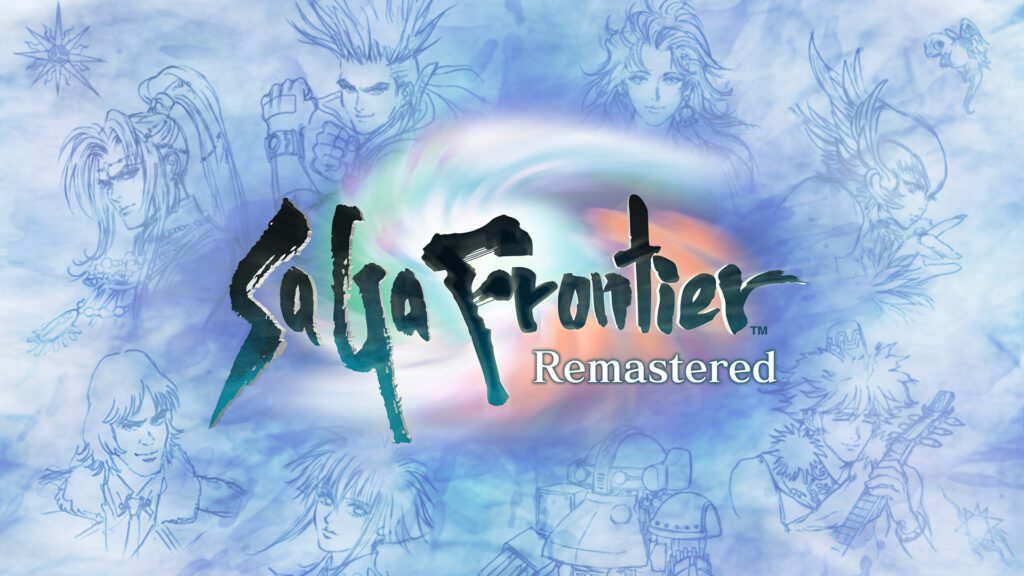
The year is 1997, and SquareSoft released Final Fantasy VII to unanimous acclaim. The Japanese RPG developer became a heavy hitter for Sony after years of their creativity being stymied on Nintendo consoles, and now the gamers began to take them very seriously and consider them to be one of the best developers in the business.
Final Fantasy VIII was still a long time away and between then, SquareSoft would release all kinds of interesting and experimental titles like Einhänder and Final Fantasy Tactics. Amidst the unrestrained creativity at the studio, something very unique was brewing: an esoteric spin-off from the Romancing SaGa franchise.
While it was a fan favorite in Japan, SaGa Frontier was met with confusion and disappointment in the west when it came out summer of 1997. It hot off the heels of Final Fantasy VII, and it was a stark contrast to the tightly directed odyessy that Cloud and the gang experienced. Did gamers in the 90s get SaGa Frontier wrong? Was this a misunderstood masterpiece?
SaGa Frontier Remastered
Developer: Square Enix
Publisher: Square Enix
Platforms: Microsoft Windows, Nintendo Switch (reviewed) PlayStation 4, Android, iOS
Release Date: April 15, 2021
Players: 1
Price: $24.99 USD
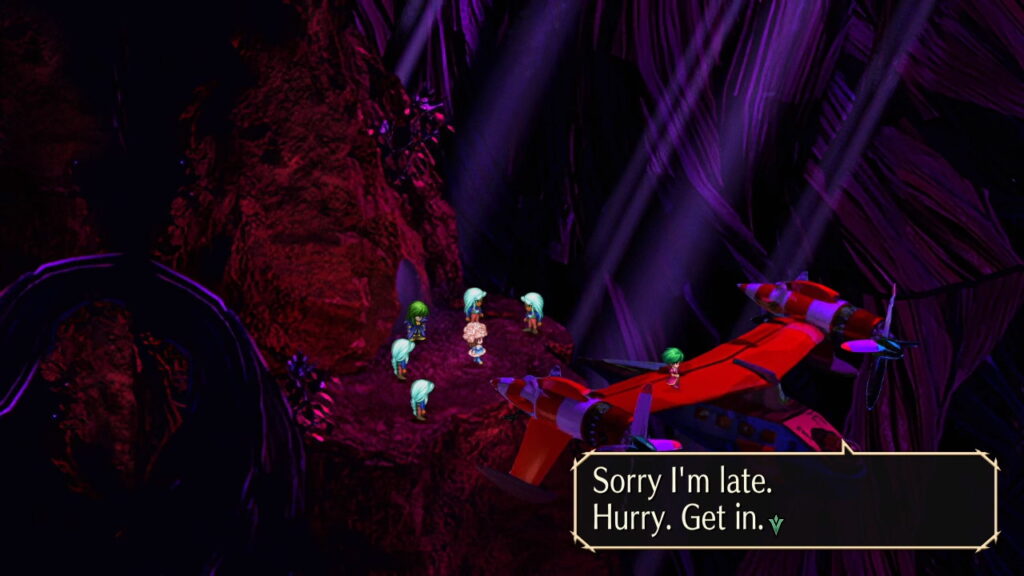
Romancing SaGa is a turn-based JRPG franchise that has emphasized freedom over a heavily directed narrative. The loose approach of allowing players roam the world and getting caught up in side adventures has made it stand out from SquareSoft and Square Enix’s flagship Final Fantasy or Dragon Quest.
There were often multiple different characters to choose from when beginning a game, and each one would tie into the others. Where SaGa Frontier differed from the previous three entries, was how it represented a paradigm shift for the series. It left the confines of traditional fantasy settings, and was set in an insane melting pot of ideas that had elements of science fiction, gothic fantasy, and mysticism.
SaGa Frontier had no limits to its world. The regions it is set in are a motley of concepts spread from many different genres and styles. Impressively, everything mixes nicely, and it has to do with the heightened and absurd tone the premise has.
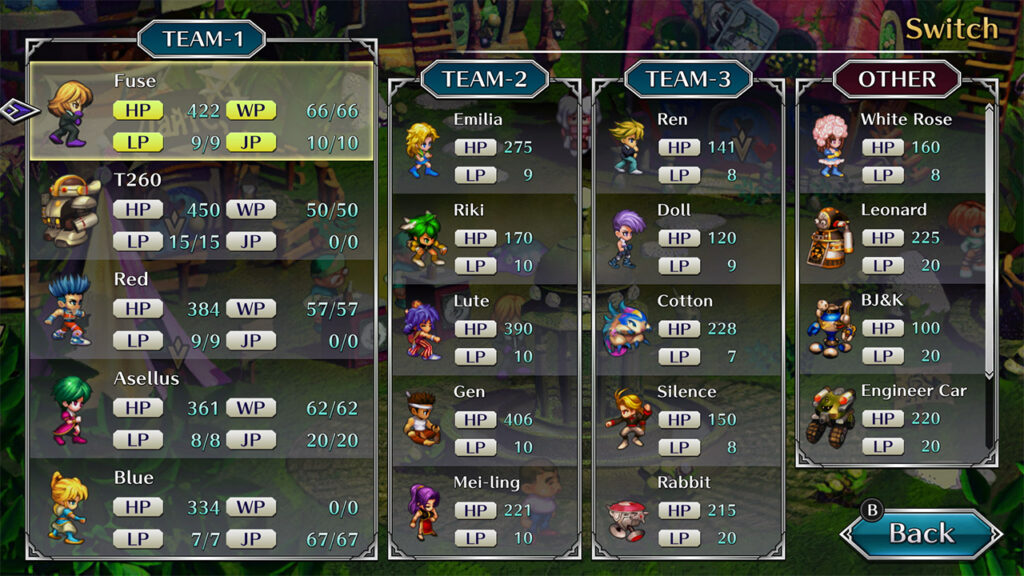
The region known as Baccarat isn’t just an impossibly large Vegas-style casino tower; it happens to be run by gold hoarding gnomes. The distinctly Earthbound-esque modern town of Shrike has a secret underbelly of haunted ancient tombs where a powerful skeleton warrior rests, and just down the street from that is a lab overrun with zombies and a dragon.
SaGa Frontier has it all. From Super Jails, to ninja ghettos, and even Manhattan; there is no telling where you will stumble upon. One moment you might be in the magic capital of the world; suddenly you might be swallowed whole by Tanzer while transferring to Koorong, because only Annie knows how to get inside for the Despair for the Rune quest.
All eight characters will be traveling all over the various regions to fulfill their story, and potentially partake in a few important side-quests. Strategizing connecting flights to the right locations becomes a cheeky gameplay flourish, since most flights take off from Koorong depending on what quest is active. This might lead into complications, and the party might end up somewhere unexpected.

Choosing a character to play as when beginning SaGa Frontier can be overwhelming, since each one does offer a unique experience. Some characters offer more freedom than others, and playing one character can lock you out from certain events or from being able to recruit desired characters.
Hot off the Super Famicom’s Treasure Hunter G is Red; the assistant luxury air-liner mechanic who lives a double life as Alkaiser, the Kamen Rider-esque super hero. Red’s story involves finding the criminal organization known as BlackX, and getting some revenge for murdering his father. His adventure is full of action and super heroics.
Red’s gameplay quirk is that he can transform into Alkaiser with boosted stats, when all other party members are dead or are robots. His game begins very linear, but opens up halfway and allows the player freedom to tackle the main four BlackX bosses in any order. It also offers the freedom to do side-content like the magic quests, or gathering some desired equipment or party members.
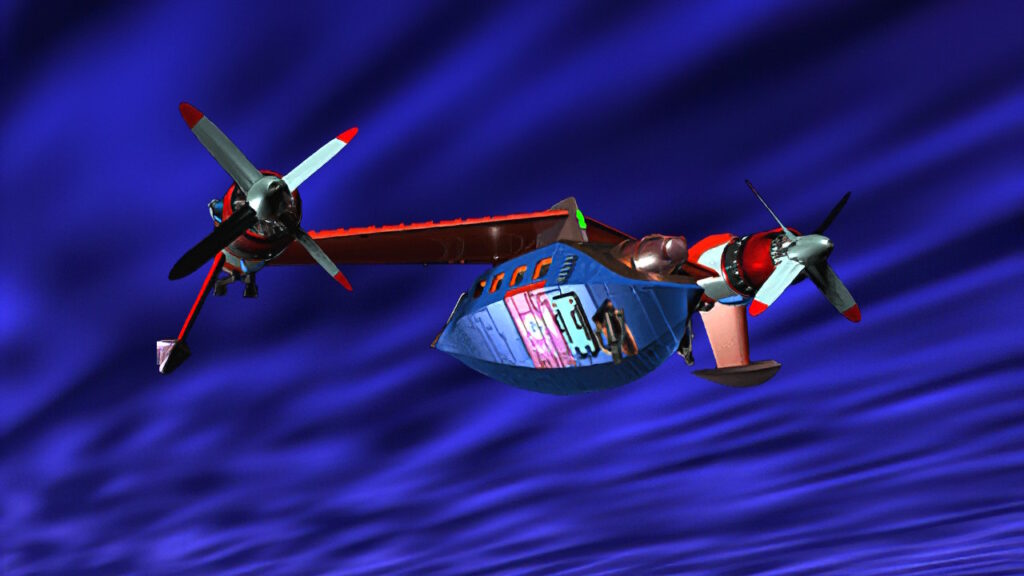
Asellus is a fan favorite character to play as. Her story revolves around being transformed into a half-mystic (mystics being SaGa Frontier‘s equivalent to vampires), via a blood transfusion with the Charm Lord. He should be called the Chad Lord, because his blood made Asellus into a sexual tyrannosaurs, making her irresistible to all females.
After a climactic escape from the Charm Lord’s gothic tower in Facinituru, he sends out a squad of mystics to reclaim her. Asellus’ adventure will have her stalked by several surprise boss battles, while she tries to find out who she is, and for her to decide what her future will be. Will she choose to be human? Half-mystic or full mystic? It is up to the player to guide her towards one of her multiple endings.
Mystics get high magic stats and the mystic weapons in their attack options. While they are nothing special damage-wise, they have the ability to absorb monster abilities. The monster abilities make this race unique from humans, since some of these powers can be very powerful or useful; though never as good as the abilities humans can learn from the different schools of magic or the special weapon attacks.
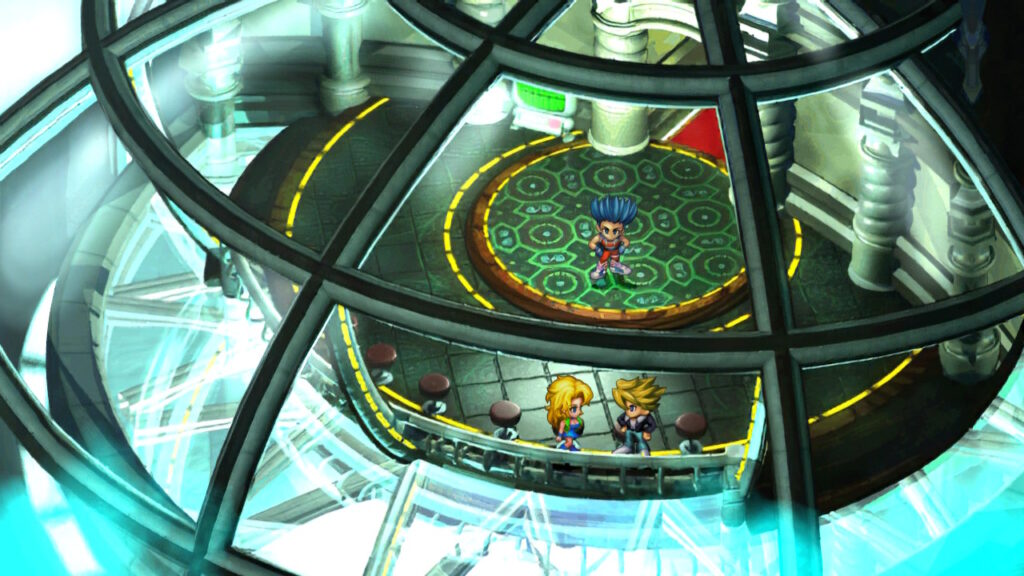
An issue that was a problem in the PlayStation version is still present in the remaster. Mystics are few and far between, and they fail to measure up to the power of humans. Mystics learn no special weapon attacks from swords, no martial arts, or guns.
It is a restriction that could be interesting if there was protagonists who recruit no humans. But no matter what, there is always a really useful human character who can join.
Rouge is one of the best magic users in the game that has the powerful realm magic; something that only he and Blue can have. Rouge also is very easy to recruit, so long as you aren’t T260G, and he renders most mystics redundant.
Gen is one of- if not, the best melee fighter. He’s cable of learning the most powerful martial arts, katana techniques, and sword attacks. He is also very easy to recruit, and will join anyone who is partaking in the arcane card quest. His effectiveness in combat highlights just how pointless some of the other races can be in the game.

T260G is a mec, seeking purpose and trying to uncover its past. The journey this robot undergoes will be more than just a surreal sci-fi quest, but an surprisingly spiritual one that asks questions on the measure of humanity itself. Mec’s are an unusual race since they don’t grow stats after battle, and require a carefully considered set of equipment and items.
T260G is different from other mecs in SaGa Frontier, since it is able to undergo re-building of its type as the protagonist. There are several different classes of mec to use, and these models are reflected in the other recruitable mecs in the game. One is built for speed, another is effective as a healer, and there is even an assault style model for doing attacks that are especially effective against other mecs.
Emilia’s story begins with her being framed for the murder of her fiancé, and the subsequent prison escape. After gaining her freedom, she joins Gradius after getting a lead that ties to her fiancé’s killer; who happens to be connected to Trinity, a powerful and dangerous organization.

Emelia is an average female super model, capable of learning the standard abilities most humans can learn, but can change her class. During the course of her story, Emelia will don several disguises that give her different stat growths. Depending on the costume, she will also learn weapon abilities at a faster rate.
If she is dressed as a masked wrestler, she will learn martial arts faster. Wearing the army outfit will learn gun moves faster. There is a costume for every play style. Emelia will be able to take on the various side-quests to learn from the various types of magic.
Blue is an interesting character, since he is the most cruel protagonist to play as. His cold and harsh demeanor, and his simple goal of learning all the magic possible makes him seem like a magical hit-man. His story is very open ended, and climaxes after he acquires all schools of magic.

What makes Blue’s gameplay unique is that he is the only character able to learn all types of magic; otherwise learning one will typically cancel out the other. Acquiring the gift of space magic locks out the ability to earn the gift of time magic for example. Only Blue can get all of them, and he is also the only one who can teleport to any previously visited location.
Riki is the sole monster protagonist, and his adventure is the most directed and linear of them all. His mission is to acquire the rings of power to save his land and fellow Lummoxes. The rings are magical relics that supposedly will restore his region back to a flourishing land, but Riki and his elders are unsure. The quest he partakes is purely a gamble, and is the last resort for him and his kind.
As a monster Riki can only equip accessories, and can only absorb other monster abilities. None of the monsters in SaGa Frontier can learn magic, any of the weapon abilities, or gain stat growth after battles. All they have is the monster morphing and absorbing, which is very limiting because only one ability can be learned from a defeated enemy per battle.

Monsters were always the least desirable party members to use since they were the most restrictive, and SaGa Frontier Remastered makes no effort to make them better than they used to be. Just like in the original PlayStation game, monsters are the toughest race to use. Even Undead Master Sei, one of the hardest bosses in the game, becomes a subpar monster party member when he joins.
Along with Blue, Lute is one of the more open-ended characters to play as. Lute is a free-spirited minstrel, who’s only goal is to go out on some adventure… At first. His story has some ties to Emelia’s vendetta towards the Trinity organization, and what begins as a light-hearted quest about the importance of music, climaxes with a secret base and gigantic war mechs.
Lute is the most standard character of the bunch. His quirk is that he is normal in the cast of super heroes, monsters, vampires, space cops, secret ninjas, and robots. Despite being such an average joe, he does have great potential of awesome power, and is decent at learning any kind of attacks or magic. He is also the one guy who can join any other protagonist, as he is the spirited adventurer.
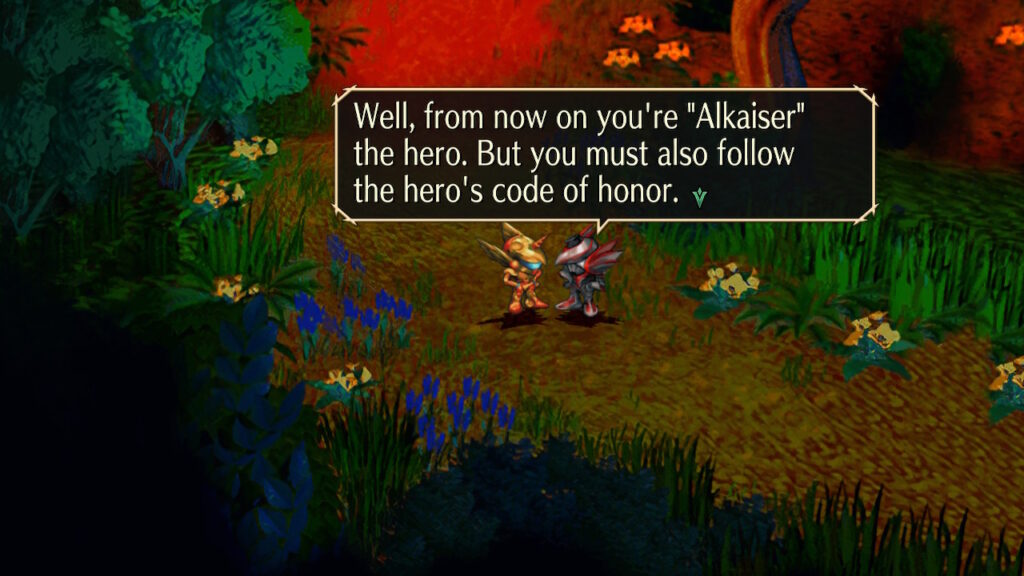
The “free-scenario” system in SaGa Frontier is designed around the concept of every character having access to the same general sub-stories and side-quests. While there are some exceptions to this, it means that no matter who you play as, there is always something to do.
Upon repeat play-throughs, a clever gamer might realize how the chain of events affect one another, and how to best game the system in their favor for an easier time. Knowing which characters join for specific quests and which get locked out is not enough, since taking on certain side-quests sometimes require extra planning or demand some sacrifice at the player’s expense.
Want to meet the Time Lord? Be ready to sacrifice the protagonist’s max Life Points. Hoping for a trip to Despair? Do not forget to bring the infra-red goggles to see the lasers, otherwise you’re going to have a bad time. SaGa Frontier‘s openness means potentially encountering powerful foes very early, so it is important to plan ahead and to ensure a prepared party.
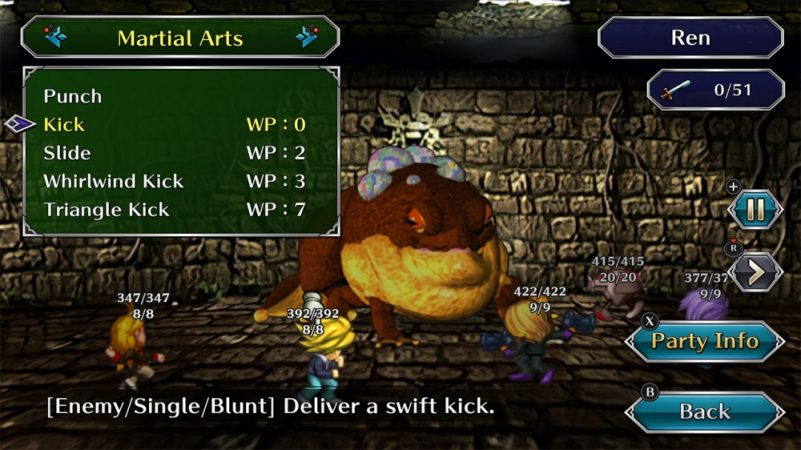
Powering up in SaGa Frontier is unlike most JRPGs. Grinding is not a viable option, since characters do not level up from experience. Instead they seemingly randomly gain stat increases based on how they are used in battle. Endlessly fighting weak enemies won’t be a smart way to boost stats either.
SaGa Frontier scales the power of enemies based on the number of battles the player has won. Every victory makes the basic enemies a bit tougher, and more advanced threats with more diabolical attacks will begin to appear.
Fleeing is a recommended action, and trying to evade the onscreen enemies will need to become muscle memory for anyone who wants to avoid late game bosses having ridiculous amounts of health.
Learning attacks happens randomly mid battle, and require that the respective character have at least one open slot in their attack sheet. This known as “glimmering;” the character gets the idea for the attack in the heat of the moment. Typically, the best way to learn new moves is to consistently use attacks that cost weapon power (WP).

Some characters learn at different rates, and specialize in some types better than others. This is something to keep in mind when forming a party, since there is a limited amount of slots for the cast, and the player will have to choose carefully what they do. Actions in SaGa Frontier have consequences; a rarity for JRPGs.
An issue that was often a barrier for the original version of SaGa Frontier was how little information it gave the player. Tons of stats were hidden, and many of the added bonuses to weapons or gear were poorly explained; or in most cases, not explained at all. It could be troublesome in some instances, where it is unclear what must be done to progress.
SaGa Frontier Remastered addresses many of these issues. Some equipment and abilities also get renamed to make more sense, and the wealth of information given will make the game feel brand new to returning fans. The layout of the menus make it all easy to access and digestible without missing anything crucial.
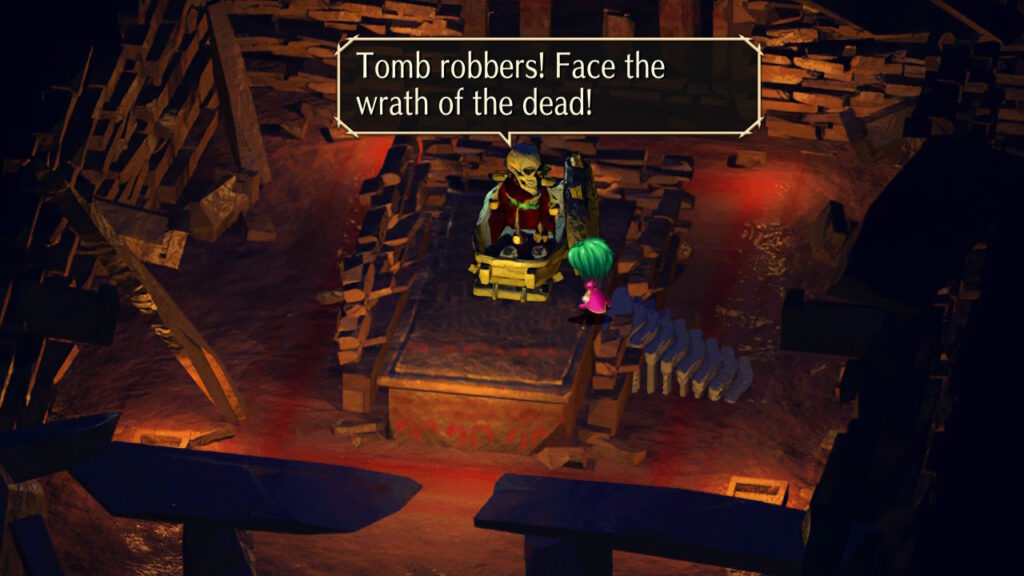
The only drawback to all the extra information is how some savant thought it would be acceptable to redesign the interface graphics to resemble something out of a cheap mobile game. Font choices are dubious, and make the game look more low-budget than it actually is.
When remastering twenty-something year old PlayStation games that were comprised of compressed prerendered backgrounds, there usually is very little hope of the image quality being passable. Square Enix’s earlier attempts with the remasters of Final Fantasy VII and VIII were lazy, and nothing was done for the woefully low resolution backgrounds.
Somebody at Square Enix cared a lot for SaGa Frontier. Some kind of A.I. upscaling was implemented for the innumerable background images, and the results are impressive. The developers found a way to make the backgrounds fit the 16:9 aspect ratio.
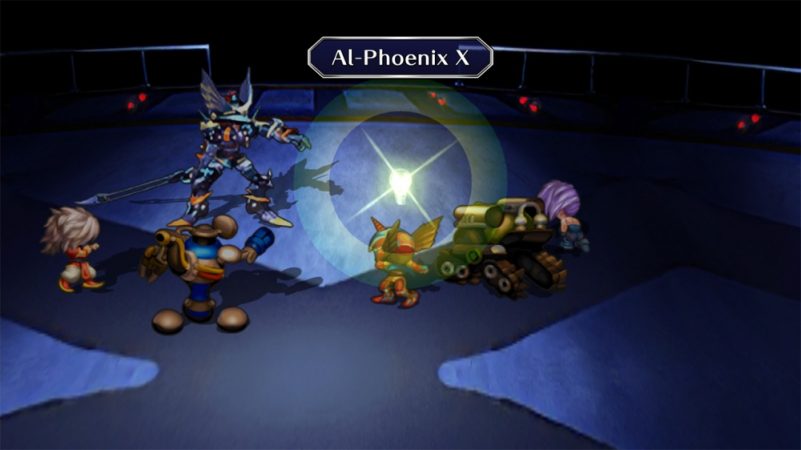
The remastered visuals are transformative; showing details that long-time fans would have never seen before. Shuzer constantly smacking his lips with his tongue like Bill Clinton around interns is a small touch that barely read on PlayStation, but in the remaster it is clear as a crisp spring morning.
It is much easier to appreciate the design work put into the backdrops. They are dripping with classic 90s SquareSoft magic, and the charm radiating from the adorable diorama style sets is palpable. For the most part the upscaling looks amazing, but once in a while it looks kind of like a painting, and not a silicon graphics pre-render.
There are tons of character sprites, and their exaggerated proportions is very fitting for the outrageous tone set by the world. A lot of the time, it will be tempting to use lesser characters because their sprite just has an incredibly cool design.
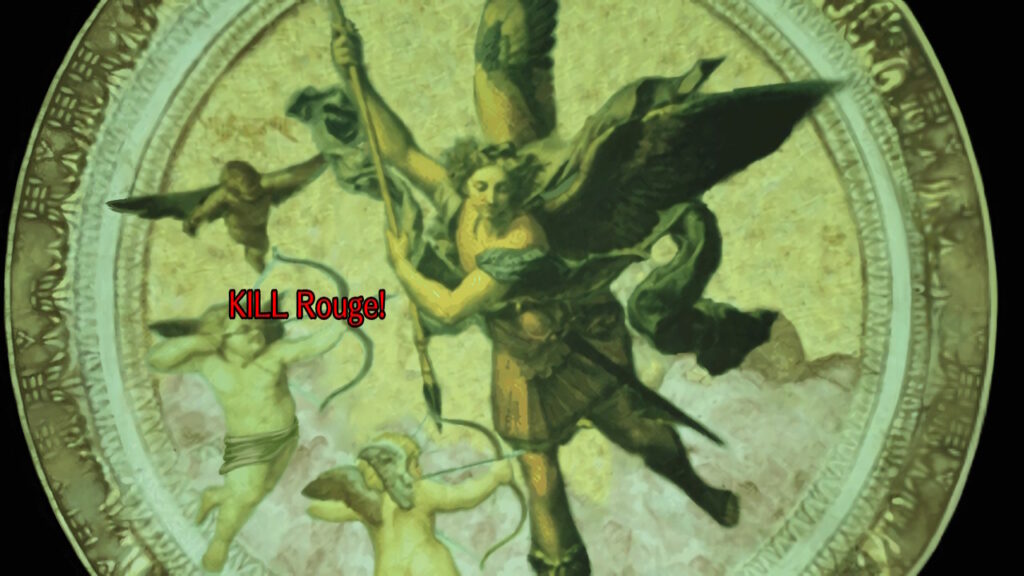
When SaGa Frontier came out after Final Fantasy VII, it was often compared for having worse visuals for not having 3D polygonal characters. Amusingly, nobody says how the character models in Final Fantasy VII have aged well. SaGa Frontier Remastered looks better than ever, apart from the vulgar UI design.
Thankfully, there are plenty of options to disable most of the added QOL indicators that clutter up the screen. Casual gamers might need to rely on the map cues, but they would be doing themselves a disservice; getting lost in SaGa Frontier is a big part of the experience.
One quality that has aged even better than the graphics or designs is Kenji Ito’s music. The score of SaGa Frontier is widely considered so perfect that the remaster does nothing to improve upon it, because there is no way to make it better.

Ito composed five battle themes, and unique final boss themes for each of the protagonists. Each one of them will blow you to the back of your wall from their intensity, and multiple climaxes and chaotic shredding.
There are so many different music styles in SaGa Frontier, that it would be easy to assume that it had multiple composers working on it. When Kenji Ito needs to make music that feels like a calm and breezy town, it is easy to imagine the light wind brushing across your brow. When he wants to make a foreboding and haunting ancient ruin, you’ll feel the tension clenching in your core.
The more modern-like or technological settings have a cold percussive rhythm of metal clapping. No matter, the atmosphere is strong in every area and there is never a weak track. This might be one of the best soundtracks for any JRPG ever composed; certainly as worthy as the greats of its era.
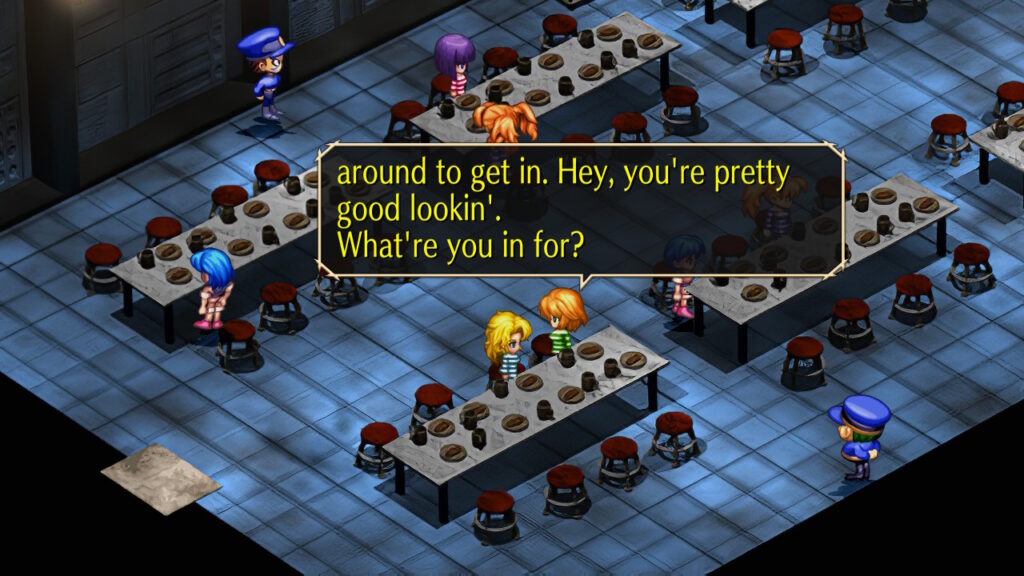
The biggest addition to SaGa Frontier Remastered is the restoration of some lost content. This was a game that was infamous for how it was released incomplete. While some key events have been restored, like an extensive sequence of Asellus making discoveries about herself and the mystics, this is still mostly the same game from 1997.
What every SaGa Frontier fan would be most interested in is that the IRPO officer Fuse is a playable protagonist after completing one of the initial seven characters. His adventure is mostly for laughs, and he is able to recruit almost every character in the game; barring the one he must fight as a final boss.
The system data created at the start is used for transferring the stats and abilities for any respective character that Fuse might recruit. Fuse’s scenario also restores another lost character; Ren, Emelia’s fiancé. The amount of freedom and customization offered in this story outdoes everything else in the game.
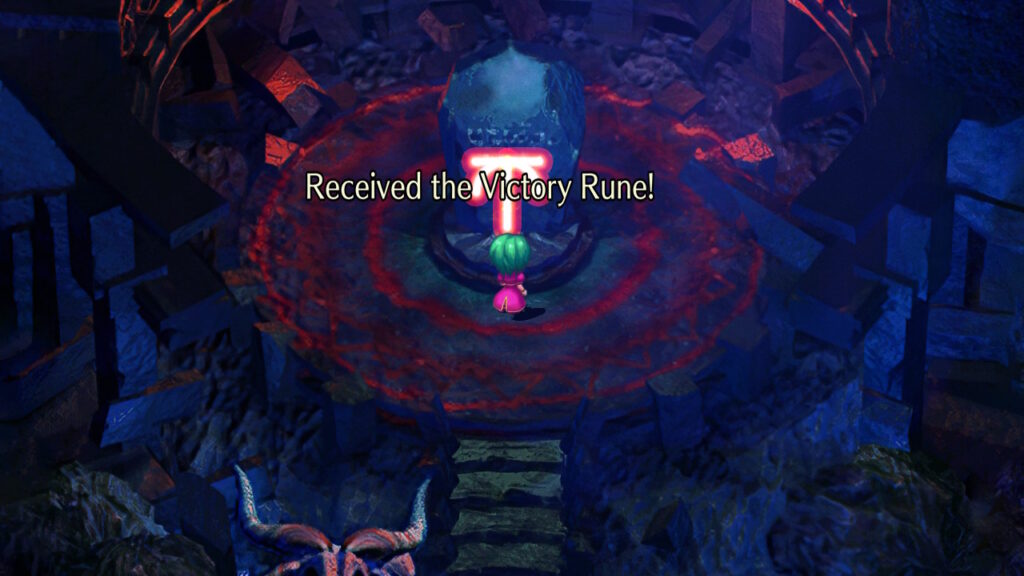
SaGa Frontier Remastered improves upon an underappreciated classic in most ways. Its drawbacks are insignificant, due to the grander tapestry it presents. The restoration of content and added information on gameplay details makes it a much deeper and fuller experience than ever before.
SaGa Frontier is not perfect, but it wore its flaws on its sleeve. There is something intensely magical about exploring a Kowloon-inspired city and talking to an excited razorback, while visiting a pole dance bar that happens to have a skeleton on stage. It’s hard to not be sucked into the weird and bizarre setting, and not fall in love with it.
Kenji Ito’s brain melting music certainly elevates the experience, and the brevity of each scenario prevents SaGa Frontier Remastered from ever overstaying its welcome. This is one of the most replayable and addictive JRPGs ever made, and it was overlooked for not embracing new technology. There is still nothing like SaGa Frontier, and there likely will never be.
SaGa Frontier Remastered was reviewed on Nintendo Switch using a review code provided by Square Enix. You can find additional information about Niche Gamer’s review/ethics policy here.